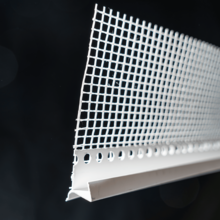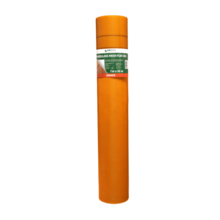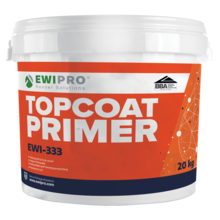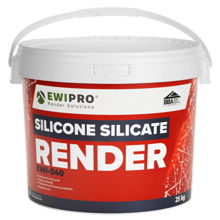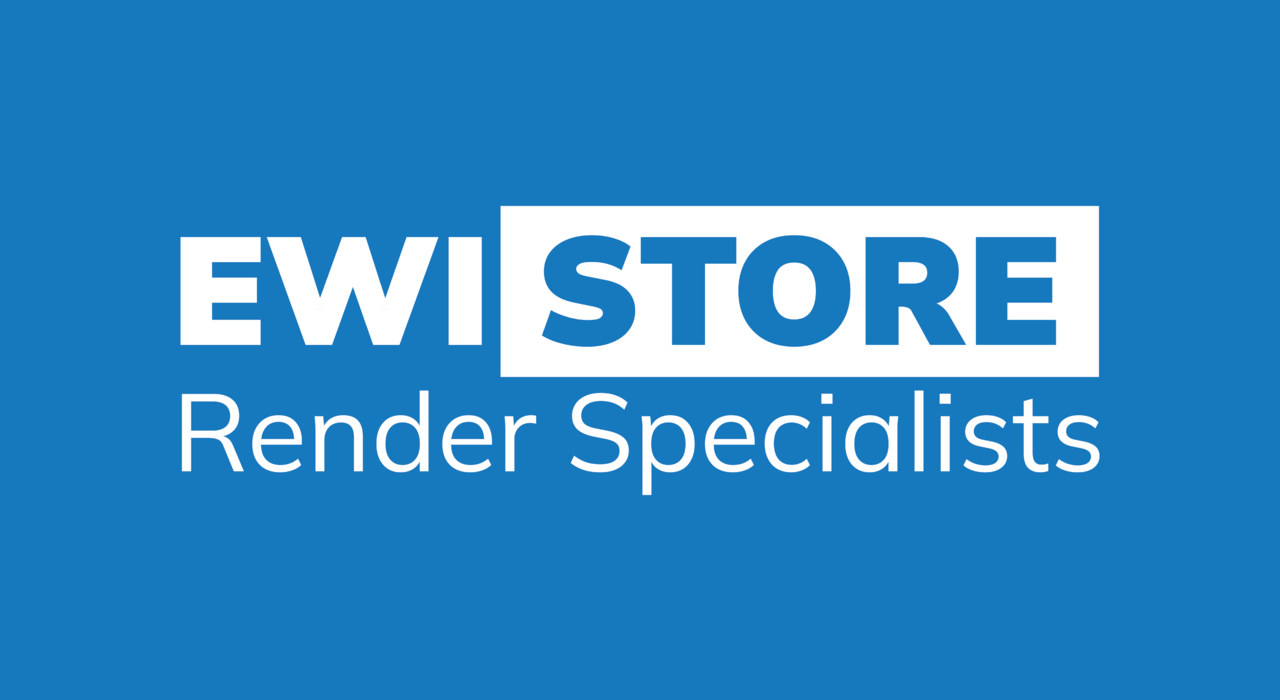
- What is a Carrier Board?
- 1. Installing the Render Carrier Board Tray
- 2. Screwing the Render Carrier Board to the Battens
- 3. Meshing the Joints
- 4. Applying the Beading
- 5. Preparing the Basecoat
- 6. Applying the Premium Basecoat and Embedding the Mesh
- 7. Preparing the Topcoat Primer
- 8. Applying Silicone Render
- Download our Complete Guides
What is a Carrier Board?
A carrier board, or render carrier board, is a type of material often used when rendering onto a timber frame building. It is a product used to provide a durable backing surface prior to the application of render solution.
Typically composed of cement, carrier boards provide the installation with long-lasting structural integrity and protection against the elements. They are especially practical in areas with high exposure to wind and rain.
When rendering onto carrier boards, there are some specific materials you will require. As such, we have put together a handy complete guide to equip you with all the knowledge you will need to understand the rendering onto carrier board process.
1. Installing the Render Carrier Board Tray
Render Carrier Boards usually sit at 400mm or 600mm centres. They should also have an air gap of at least 25mm behind them. This creates a ventilated cavity to allow proper drainage and air movement to take place.
You should place a 12mm render carrier board tray at the bottom of the carrier board. The inbuilt mesh profile allows you to create a drip at the bottom of your render system. At this point, we highly recommend fixing the tray to battens as this ensures the carrier boards are fixed as straight as possible.
Once you have fixed the tray onto the battens, the render carrier boards can be slotted in and screwed into place.
2. Screwing the Render Carrier Board to the Battens
After installing the render carrier board tray, your next port of call should be to screw the render carrier boards to the battens.
Our self-countersink screws are designed specifically for attaching carrier boards to battens. These screws come in boxes of 250 and have a countersunk head with nibs for a flush finish. Each render carrier board will require around 30 screws.
Each box of screws has a coverage rate of 25m2. The length of the screws ranges from 38mm.
3. Meshing the Joints
Between each board, you should leave a 2.0mm-3.0mm gap to allow for movement. You can then reinforce these gaps using 200mm strips of mesh on either side of the gap, then apply the EWI-225 Adhesive. In this way, you can add structural integrity to the board and improve its overall sturdiness.
4. Applying the Beading
A further key component of the rendering onto carrier board process is beading. Beading works to reinforce certain areas on the external wall that are more prone to damage.
The beads you will require will depend on the areas that need reinforcing. For example, windows, doors and corners.
Our selection of available render beads allows you to choose the perfect beading for your property. They are uPVC and designed to be embedded in the basecoat layer.
5. Preparing the Basecoat
Render onto Carrier Board insulation projects require the use of our strongest adhesive, EWI-225 Premium Basecoat.
Simply use a paddle mix to mix the contents of the bag with 5.9L of water. Once thoroughly mixed, leave for 5 minutes, mix again and then the product is ready for use.
1 bag of EWI-225 covers 3-4m2 and has a drying time of 24-48 hours.
6. Applying the Premium Basecoat and Embedding the Mesh
When applying the EWI-225 Premium Basecoat to the render carrier board, we recommend using a 10mm notched trowel. Once applied to the surface, embed overlapping fibreglass mesh and then flatten the EWI-225 with the straight edge of a trowel, drawing the basecoat through the mesh.
Once cured, this layer reinforces the system with a strong, flexible and waterproof base.
1 x 25kg Basecoat bag coverage = 3-4m2
At EWI store, we offer different weights of mesh to suit your individual project’s needs. Our meshes are coated with acrylic acid copolymer liquid for a long-lasting effect. Below is a breakdown of each mesh’s capabilities:
1) Orange Fibreglass Mesh (165g/m2 ): for guaranteed strength and flexibility. This mesh is
water resistant and protects against alkali damage and aging. 1 x 50m2 roll covers 42.5m2
when overlapped.
2) Panzer Fibreglass Mesh (300g/m2 ): our strongest mesh available. It guarantees a premium
level of impact and crack resistance against the elements. 1 x 25m2 when overlapped.
7. Preparing the Topcoat Primer
Following application of the basecoat and mesh to your render carrier board, your next port of call should be to prime the surface.
Priming the basecoat helps with the adhesion process during rendering as it limits absorption to the basecoat. Our EWI-333 Topcoat Primer is designed specifically for this purpose and can be tinted to match the colour of your silicone render.
EWI-333 has a drying time of 12-24 hours, depending on the coverage. Its coverage rates are listed
below:
- 7kg = 20m2
- 20kg = 60m2
8. Applying Silicone Render
The final step in the process is to apply render over the render carrier board, once the Topcoat Primer has dried.
Since most of our renders are thin coat renders, the thickness of the topcoat depends on the grain size of the render. Our EWI-075 silicone render is our most popular render when used in conjunction with render carrier boards and the available grain sizes are 1mm, 1.5mm, 2mm and 3mm. For reference, if you were to purchase the 2mm Silicone Render, your topcoat should be applied no thicker than 2mm.
Render should be applied using a trowel. Any excess render should always be removed. Use a plastic float to apply the render in a circular motion for your desired finish.
Below are the various coverage rates you can expect from different grain sizes:
- 1.0mm = 12m2 - 13m2
- 1.5mm = 9m2 - 10m2
- 2.0mm = 7m2 - 8m2
- 3.0mm = 5m2 - 6m2
Download our Complete Guides
All products mentioned are available in the EWI Store. If you have any further questions, you can contact our Sales team on 0203 034 0022.
You can download a copy of our complete guide below.

